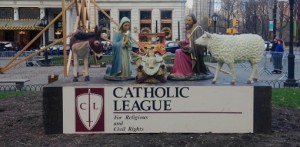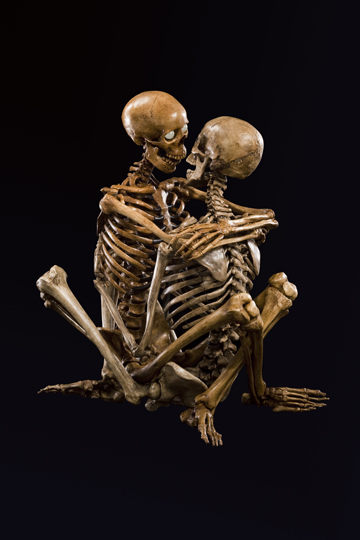The following article by William McGurn can be found in today’s Wall Street Journal:
“Religion and the Cult of Tolerance”
Earlier this summer, the chief rabbi for Great Britain warned about a new intolerance being imposed in the name of tolerance.
“I share a real concern that the attempt to impose the current prevailing template of equality and discrimination on religious organizations is an erosion of religious liberty,” Lord Sacks told a House of Commons committee in June. “We are beginning to move back to where we came in in the 17th century—a whole lot of people on the Mayflower leaving to find religious freedom elsewhere.”
Though not as pronounced on this side of the Atlantic, we can see the same trend that so worries Lord Sacks. Here too the imposition comes in the guise of nondiscrimination laws and codes. Here too the result is the same: Faith organizations are told whom they must employ and what they must assent to, or face being shoved off the public square.
The latest example is a case called Hosanna-Tabor Evangelical Lutheran Church and School v. Equal Employment Opportunity Commission, which the Supreme Court has just agreed to hear. It stems out of a dispute involving a teacher who was replaced at a very small school when she became ill and absent from work. When the teacher threatened to take her complaint to the EEOC, she was sacked.
School leaders say that taking disputes outside the community violates church teaching. Their argument didn’t fly at the Sixth Circuit Court of Appeals. Now the Becket Fund for Religious Liberty, a sort of American Civil Liberties Union for people of faith, has taken up the cause.
“The Becket Fund is involved in this case because it’s not just about one little Lutheran school in suburban Detroit,” says Fund attorney Eric Rassbach. “It’s about the ability of people of all faiths to work out their relationship with God and one another without the government looking over their shoulder.”
Indeed. That helps explain why the many briefs filed in support of Hosanna-Tabor include one jointly authored by the Union of Orthodox Jewish Congregations of America, the Catholic bishops, the presiding bishop of the Episcopal Church, and the Church of Jesus Christ of Latter-Day Saints (Mormons).
At the core of their concern is just this: the politically correct rewriting of the First Amendment. Post-1791, what made America’s religious freedom truly radical was not simply that it allowed people to worship (or not to worship) as they saw fit. The radical part was the guarantee it gave to corporate freedoms: to hold property together, to own newspapers, to run schools, to open hospitals and clinics, etc.
That understanding is now up for grabs. Last week, Kentucky Gov. Steve Beshear said approval for a local merger that would create a new Catholic hospital system will depend on maintaining a “public mission”—by which he means the performance of procedures, such as sterilization, at odds with church teaching.
In San Francisco, opponents of circumcision recently attempted to outlaw it via state ballot. The California State University system has been found within its legal rights to deem a Christian fraternity and sorority unfit for recognition. Meanwhile, the National Labor Relations Board declared that two Catholic colleges are not in fact Catholic.
These are not cases of people trying to impose their beliefs on the rest of us. Instead they involve the question whether faith communities are free to live their own beliefs in their own institutions. Somehow the more “tolerant” we become, the more difficult that becomes.
In the debates over same-sex marriage, for example, the question is often asked of opponents: What can it possibly mean to you if two people of the same sex have their commitment to each other recognized as marriage? We’re now finding out. To give but one example, in Washington, D.C., it means that Catholic Charities no longer qualifies to do adoptions and foster care because it will not place children with or extend health benefits to gay couples.
So much for live and let live.
The radical uniqueness of what our Founding Fathers bequeathed us becomes more vivid when you set it against contrasting nations. In China, for example, you will find any number of churches holding worship services on Sunday. It would, however, be a huge mistake to think that China has anything close to freedom of religion.
To the contrary, governments such as China’s fully appreciate that opening the public square to organized faith groups has consequences for government control. After Tiananmen, Chinese officials told one another: Look what happened in Poland.
During a 1785 debate in the Virginia legislature over state subsidies for Christian teachers, the future author of the First Amendment, James Madison, opposed that measure as state coercion. His alternative was giving all religions free exercise, which he said would add a “lustre to our country.” When it comes to how we treat religion, 21st-century America is, of course, nowhere near China. The question is how far we’ve moved from Madison.
 The Catholic League’s annual nativity scene in New York City’s Central Park was erected today in a spot just south of the Park: It is on 5th Avenue, between 58th and 59th Street, in front of the Plaza Hotel. Tourists are showing up in droves for pictures.
The Catholic League’s annual nativity scene in New York City’s Central Park was erected today in a spot just south of the Park: It is on 5th Avenue, between 58th and 59th Street, in front of the Plaza Hotel. Tourists are showing up in droves for pictures.